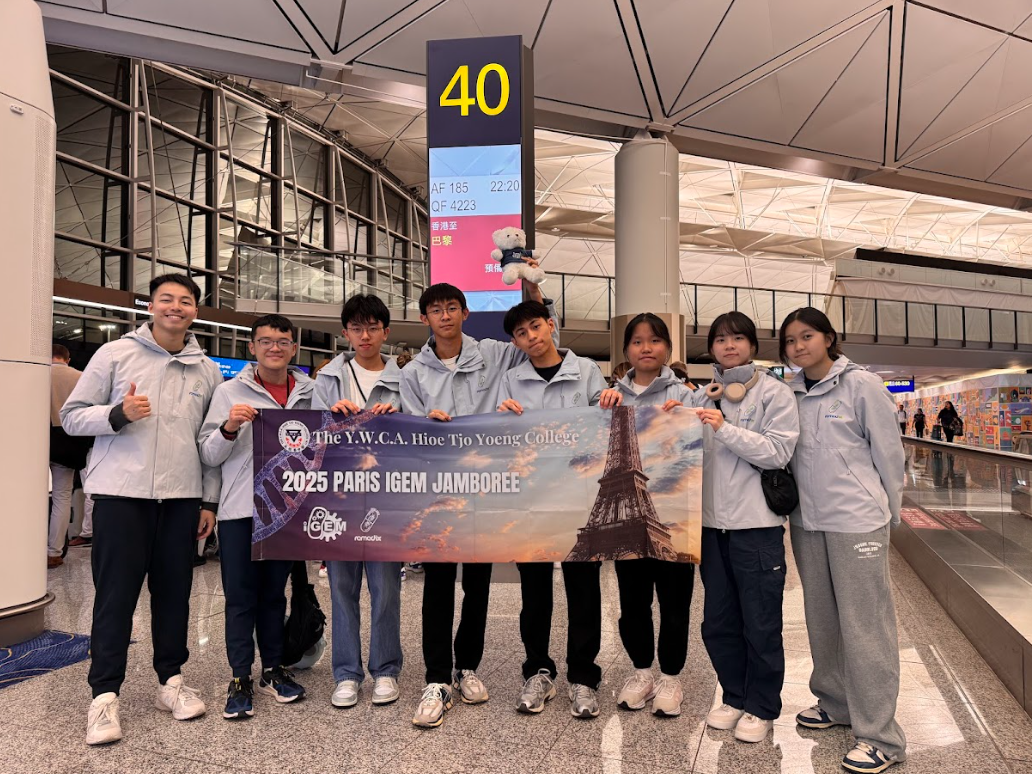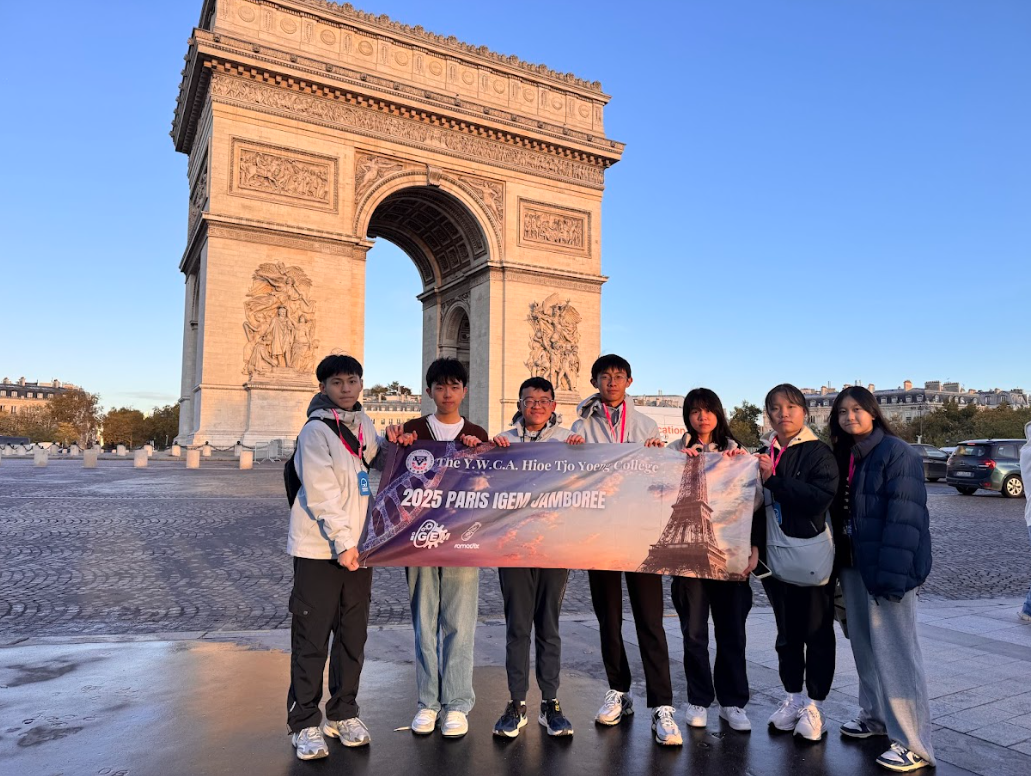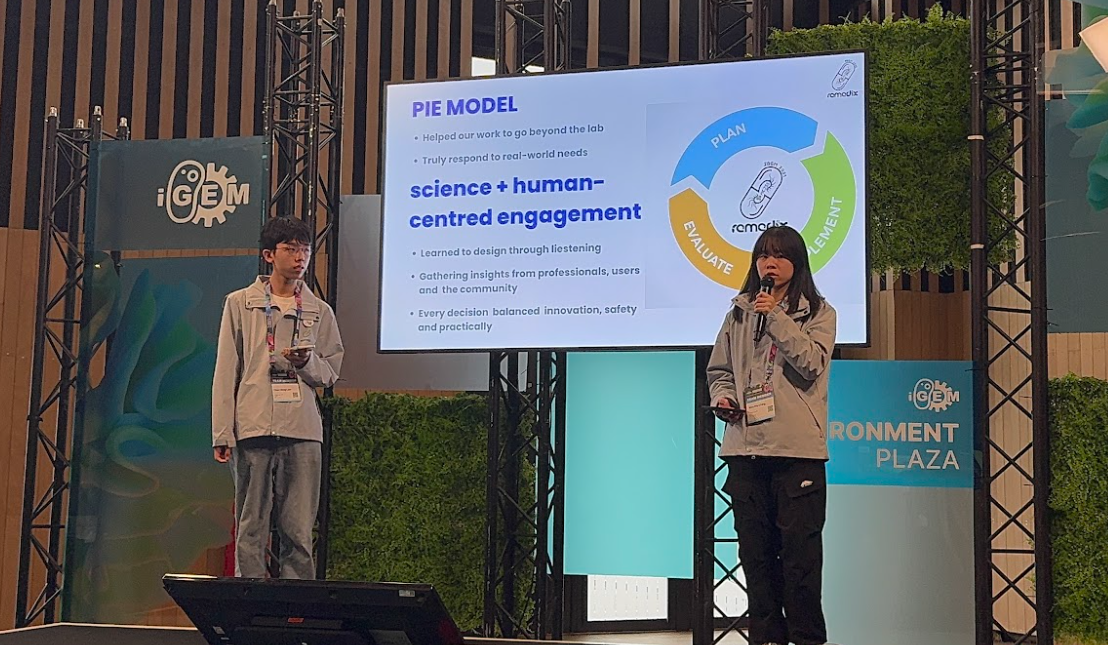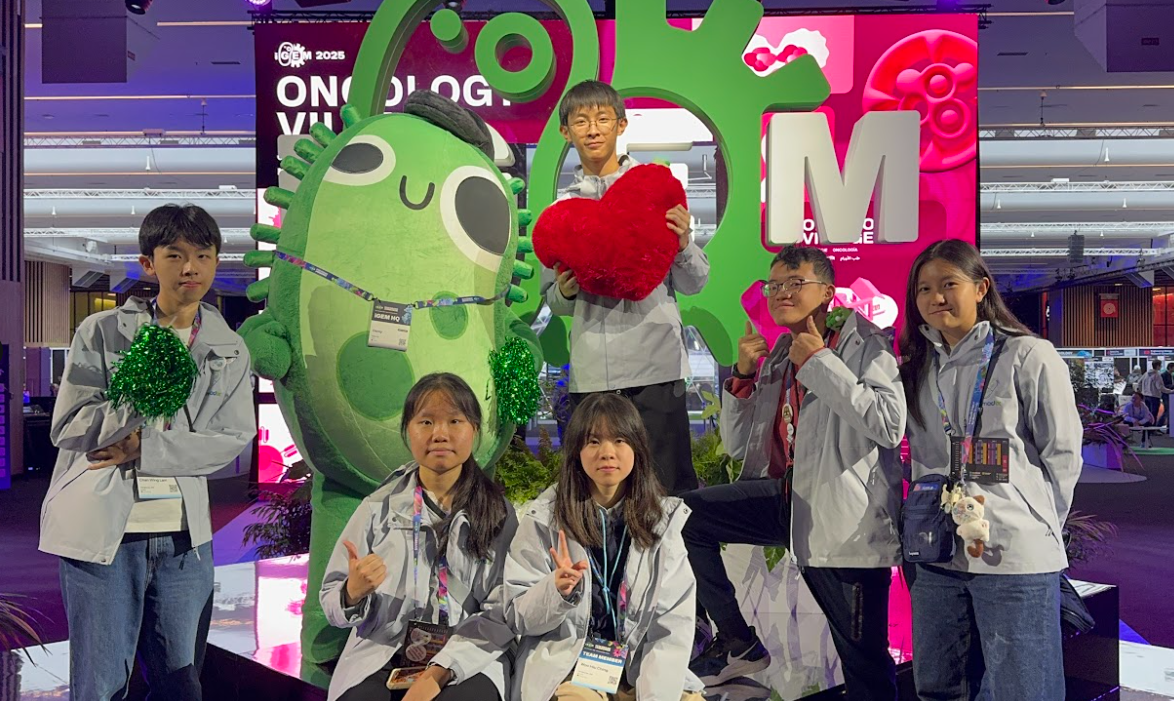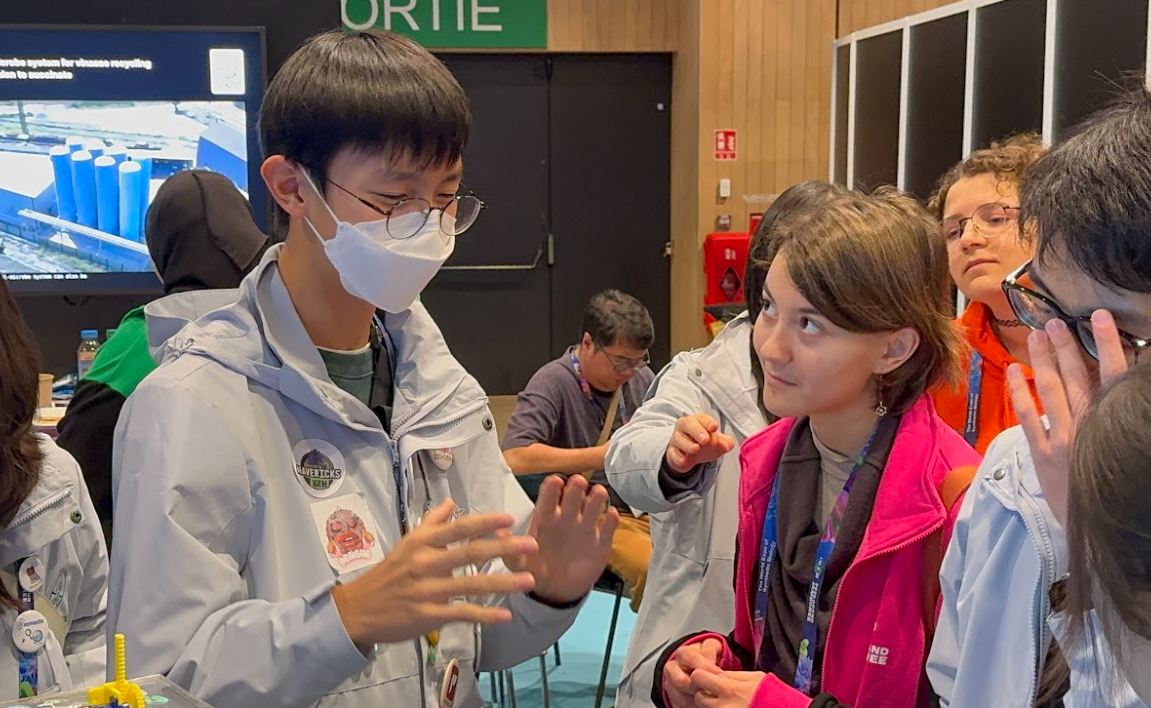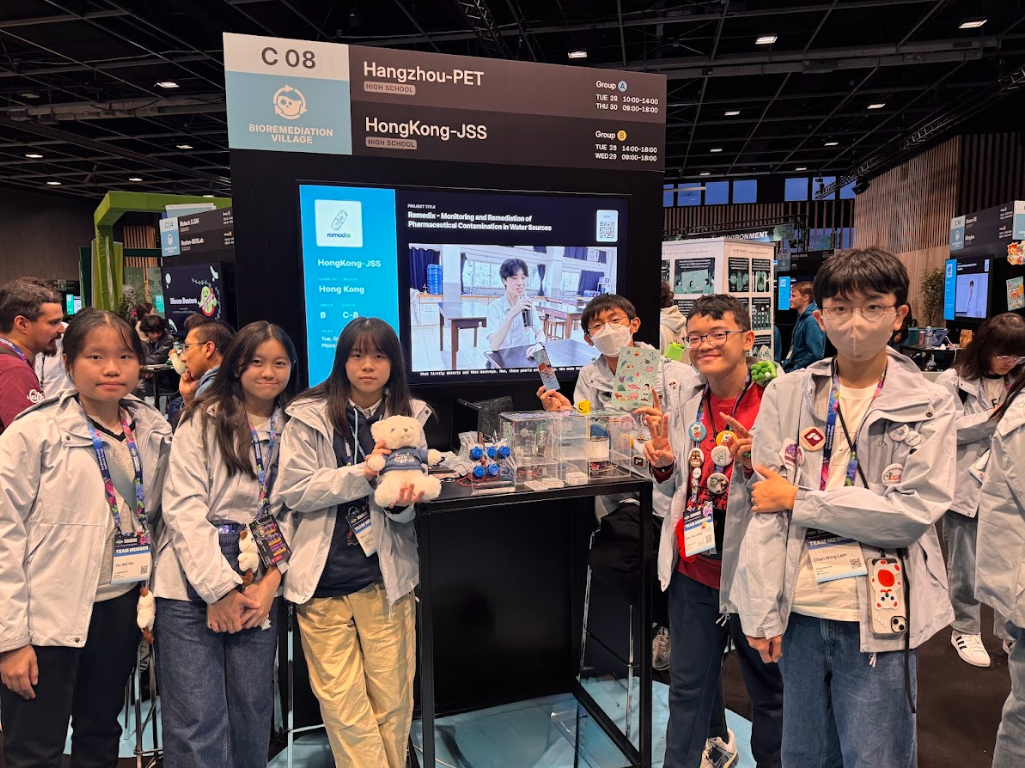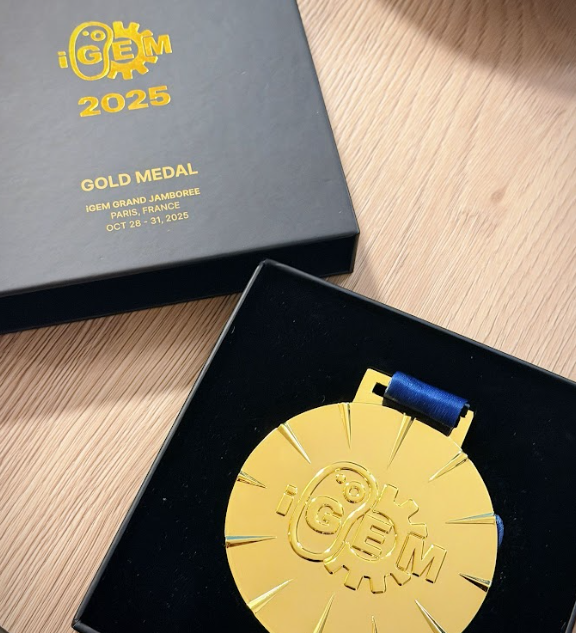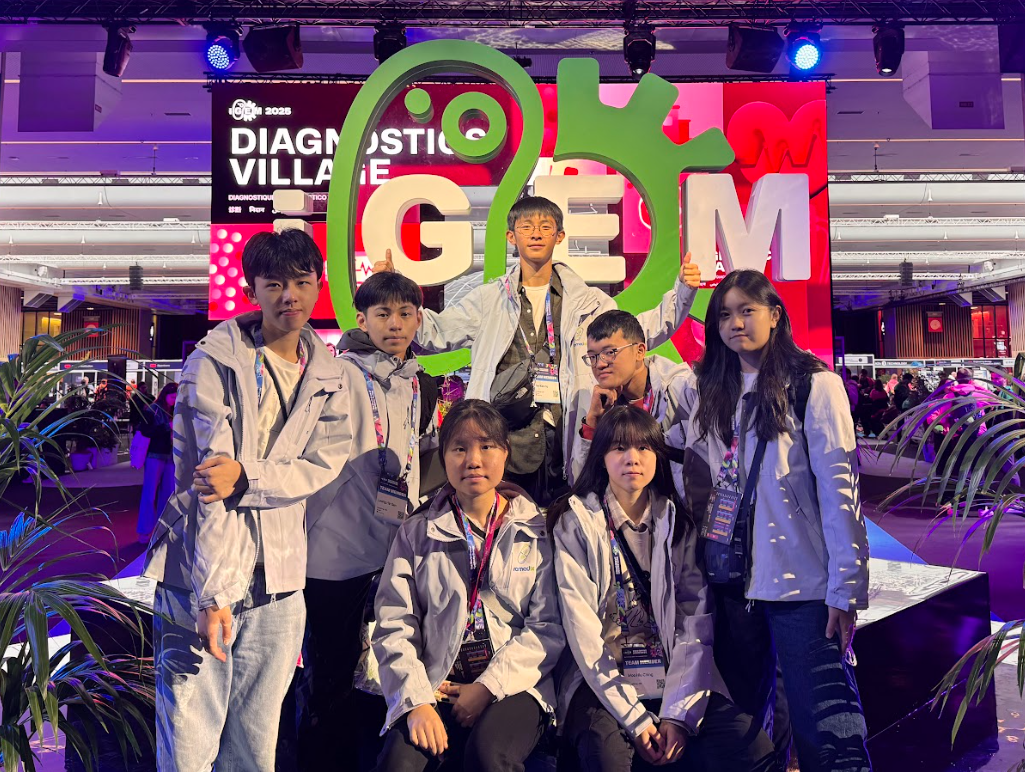國際遺傳工程機器設計競賽2025 (iGEM 2025) 勇奪金獎及獲提名「全球最佳硬件設計」
02-11-2025
國際遺傳工程機器設計競賽2025 (iGEM 2025) 勇奪金獎及獲提名「全球最佳硬件設計」
HTYC won a gold medal and was nominated for 'Best Hardware' Worldwide at the International Genetically Engineered Machine Competition 2025 (iGEM 2025)
今年本校和另外四間中學:仁愛堂田家炳中學 、保良局何蔭棠中學 、五旬節中學及妙法寺劉金龍中學組成 HongKong-JSS 香港中學聯隊,遠赴法國巴黎參加國際遺傳工程機器設計競賽(iGEM)。經過多輪評審,團隊不僅連續三年榮獲比賽金獎,更被再次獲提名中學組「全球最佳硬件設計」。
iGEM 為一年一度國際性的合成生物學競賽,作為全球規模最大且最具影響力的生物科技競賽。每年都吸引了超過 400 支來自世界各地的隊伍參賽。團隊需在有限時間內運用合成生物學及基因工程技術,以解決針對的社會問題。
團隊致力解決兩種在水中常見的藥物污染問題,包括四環素(tetracyclines)和水楊酸鹽(salicylates)。透過結合合成生物技術與AI偵察,開發出低成本、高效能的「Remedix」,用於檢測及降解這兩種在水中的藥物污染,從而保障公眾健康及環境安全。團隊利用合成生物技術改良大腸桿菌,成功研製能夠識別四環素和水楊酸鹽並產生色蛋白(chromoproteins)信號的大腸桿菌,透過顏色變化及強度判斷藥物污染物的類別和濃度。大腸桿菌亦能透過多種降解酶:TetX 和 NahG 及 XylE 分別有效地分解四環素和水楊酸鹽。
團隊成功開發便攜式AI硬件裝置「Remedix」,實現全自動化監測及降解水中藥物。裝置能培養基因改造大腸桿菌,並混合藻酸鹽,自行製作能用於檢測及降解水中藥物的藻酸晶球(alginate beads)。Remedix 結合人工智能(AI)視覺系統,能自動監測藻酸晶球的顏色變化,提供即時藥物濃度洞察,並在超標時發送警報。相對傳統昂貴及費時的藥物檢測方法,Remedix 的成本低於50美元(約400元港幣),能以更低成本及更短時間內有效檢測及降解水中的四環素和水楊酸鹽。
團隊在整個研究期間訪問了不同持份者,包括政府部門、多間大學學者、醫護界專家、獸醫、漁農業界代表及公眾,希望研究能以人為本,確保每個決策平衡創新、安全與實用性。其中,團隊有機會訪問渠務署署長莫永昌先生。署長在訪問中高度讚揚團隊的研究方向及裝置能有效幫助解決香港污水中藥物污染問題,並提高社會對藥物回收的意識。
團隊亦積極向大眾介紹合成生物學的應用,並致力於消除大家的疑慮。團隊學生自主創作了一款電腦遊戲,並製作了3D立體模型作為教育工具,同時舉辦了超過20場教育及宣傳活動,推廣相關知識。
Our school and 4 other secondary schools: Yan Oi Tong Tin Ka Ping Secondary School, Po Leung Kuk Celine Ho Yam Tong College, Pentecostal School and Madam Lau Kam Lung Secondary School of MFBM, formed a joint-school team, HongKong-JSS to participate in iGEM in Paris, France. After multiple rounds of judging, the team not only won the Gold Medal for the third consecutive year but was also nominated once again for the "Best Hardware" in the High School Division.
iGEM is an annual international synthetic biology competition, recognized as the largest and most influential biotechnology competition globally. Every year, it attracts over 400 teams around the world. Teams are required to utilize synthetic biology and genetic engineering techniques within a limited timeframe to solve a targeted social issues or problems.
Our team is dedicated to solving two common problems of pharmaceutical pollution in water, namely tetracyclines and salicylates. By combining synthetic biological technology with AI detection, we developed a low-cost, high-efficiency device named "Remedix", which is used for the detection and degradation of these two water-borne pharmaceutical pollutants, thereby safeguarding public health and environmental safety.
Using synthetic biology techniques to engineer E. coli, the team successfully developed a modified strain capable of identifying tetracyclines and salicylates and producing chromoprotein signals. This allows the types and concentration of the pharmaceutical pollutants to be determined based on the color change and intensity. The E. coli can also effectively break down tetracyclines and salicylates using multiple degrading enzymes: TetX and NahG plus XylE, respectively.
The team successfully developed the portable AI hardware device, "Remedix," achieving fully automated monitoring and degradation of pharmaceuticals in water. The device can cultivate the genetically modified E. coli and mix it with sodium alginate to automatically produce alginate beads that can be used for detecting and degrading pharmaceuticals in water. Remedix integrates an Artificial Intelligence (AI) visual system that automatically monitors the color changes of the alginate beads, providing instant insights into pharmaceutical concentrations and sending alerts when levels exceed safe limits. Compared to traditional, expensive, and time-consuming pharmaceutical testing methods, the cost of Remedix is under US$50 (approximately HK$400), allowing for the effective detection and degradation of tetracyclines and salicylates in water at a lower cost and in less time.
Throughout the research period, the team interviewed various stakeholders, including government departments, scholars from multiple universities, healthcare experts, veterinarians, representatives from the fisheries and agricultural sectors, and the public. This was done to ensure the research was people-centered and that every decision balanced innovation, safety, and practicality. Specifically, the team had the opportunity to interview Mr. MOK Wing-cheong, the Director of Drainage Services. During the interview, the Director highly praised the team's research direction and device, stating that it could effectively help solve the problem of pharmaceutical pollution in Hong Kong's sewage and raise public awareness regarding pharmaceutical recycling.
The team also actively introduced the applications of synthetic biology to the public and worked hard to alleviate their concerns. The students on the team independently created a computer game and produced 3D models as educational tools. They also held over 20 educational and promotional activities to disseminate relevant knowledge.



